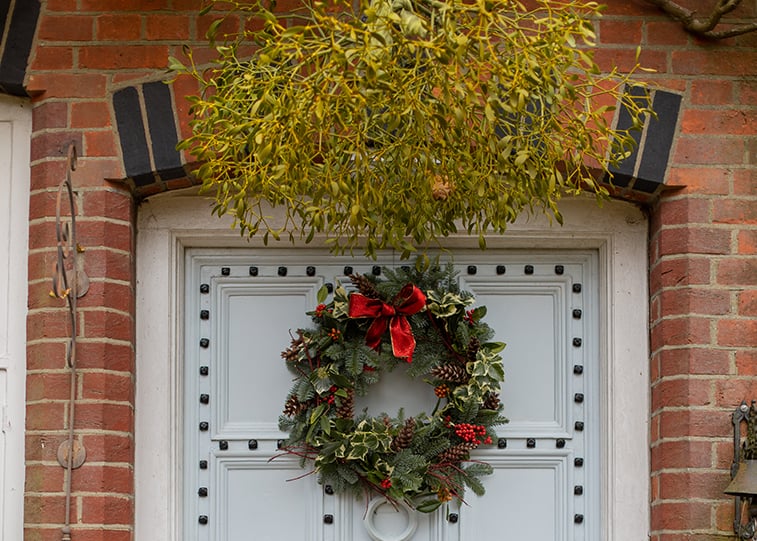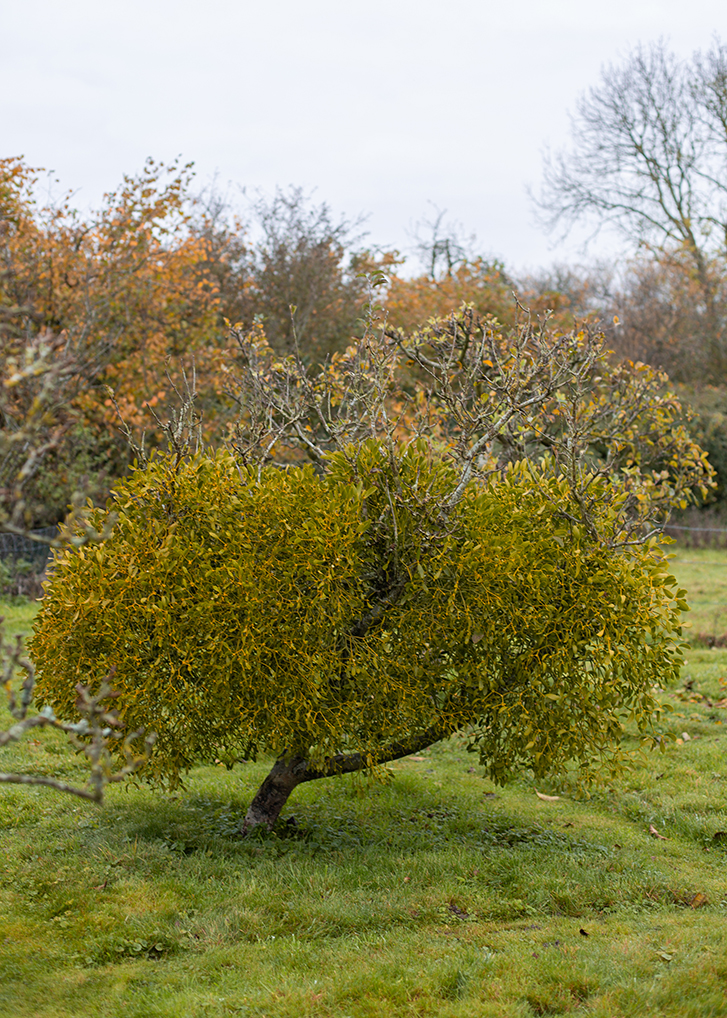Mistletoe: magic, myth and more

European mistletoe (Viscum album), is the traditional mistletoe of literature and Christmas celebrations. There are a number of stories that lie behind its use at Christmas, some magical, some mythical. We take a quick look at this punchy little parasitic plant.
The myths of mistletoe
While in the UK we associate mistletoe with Christmas, other countries link it more to New Year. In France, for example, it’s seen as a good luck charm and French people often give it to friends as a New Year gift to wish them luck in the coming 12 months.
But why do we kiss underneath the mistletoe? The short answer to this question is there is no one simple reason.
Kissing under sprigs of mistletoe is a well-known holiday tradition, but this little plant’s history dates back thousands of years. The Greeks were known to use it as a cure for everything from menstrual cramps to spleen disorders, and the Roman naturalist Pliny the Elder noted it could be used as a balm against epilepsy, ulcers and poisons. The plant’s romantic overtones most likely started with the Druids of the 1st century A.D. Because mistletoe could blossom even during the frozen winter, the Druids came to view it as a sacred symbol of vivacity, and they administered it to humans and animals alike in the hope of restoring fertility. Please don’t try this at home – the berries contain toxins that are poisonous to many animals and humans if consumed in large quantities!
Another famous chapter in mistletoe folklore comes from Norse mythology. As the story goes, when the god Odin’s son Baldur was prophesied to die, his mother Frigg, the goddess of love, went to all the animals and plants of the natural world to secure an oath that they would not harm him. But Frigg neglected to consult with the unassuming mistletoe, so the scheming god Loki made an arrow from the plant and saw that it was used to kill the otherwise invincible Baldur. According to one version of the myth, the gods were able to resurrect Baldur from the dead. Delighted, Frigg then declared mistletoe a symbol of love and vowed to plant a kiss on all those who passed beneath it.
- Hang your mistletoe outside – it will last much longer
- Most European mistletoes are evergreen and most abundant on apple trees, poplars, willows, lindens, and hawthorns, and are easy to locate and harvest after their deciduous hosts have lost their leaves in late autumn and winter
- If you can, hang it in large bunches for more impact
- Keep it away from pets and children as the berries contain toxins poisonous to many animals and humans
- Mistletoe lasts longer hung outside
- An apple tree heavy with mistletoe
All images part of Penny Snell’s ‘Christmas Pizzazz’ online talk – which you can buy here
Click here for more great Christmas content




















